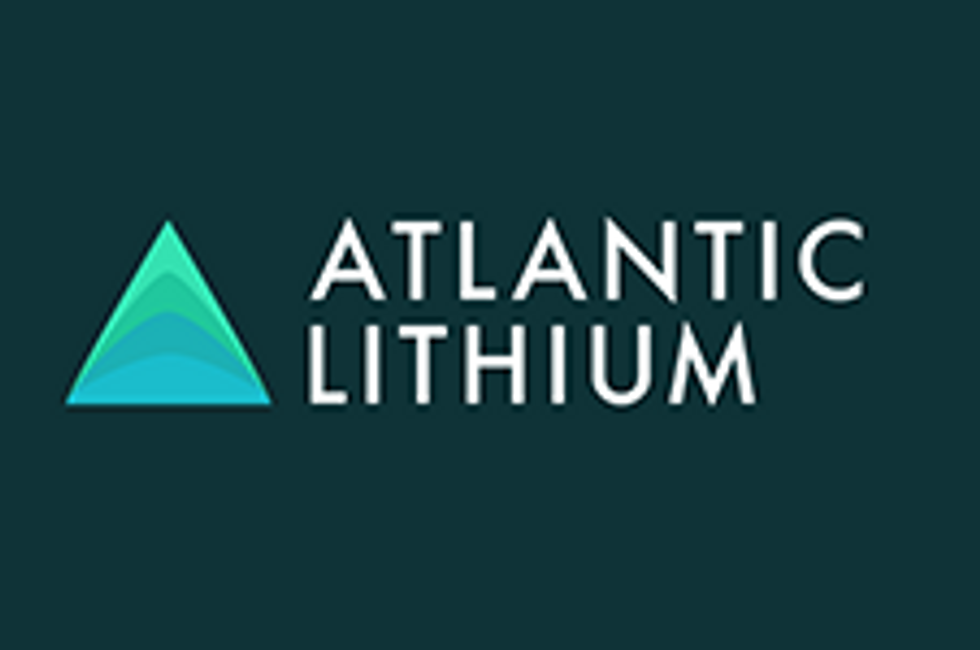Beyond Mining: Building Australia’s Processing Capacity for EV Raw Materials
Read on to learn more about Australia's processing capacity for key metals such as lithium, rare earths and cobalt.

Electric vehicle (EV) sales and forecasts for the coming decade continue to be reviewed to the upside, leaving little room for doubt that demand for the key raw materials used in EV batteries will increase.
Announcements and commitments from governments and carmakers have led to many raising a question that has been at the center of debates in the industry for years — where will all this supply come from?
Australia is in a privileged position when it comes to resources needed for the electrification of the world, with lithium, rare earths and cobalt found in abundance in the country. But it is not just about mining the right metals, to be used in EV batteries — these materials need to be processed to the right standards.
Read on to learn more about Australia's processing capacity for key metals such as lithium, rare earths and cobalt, and what challenges are ahead for the land down under as it builds out its critical minerals supply chains.
Developing critical minerals supply chains in Australia: Challenges and opportunities
Security and development of regionalized supply chains for EV raw materials have been main concerns for all stakeholders in the past few years ― with COVID-19 putting their resilience to the test.
As the green energy push around the world continues to put a spotlight on electric vehicles, governments have taken a special interest in developing critical mineral resources.
Critical minerals value chains are typically more reliant on the economics of processing than mining, Harry Fisher of CRU Group told the Investing News Network (INN).
"As such, much of the processing has taken place in geographies with either low power or labour costs and weak environmental standards," he said. "Further market concentration in China and its associated rapid changes in export policies can produce significant market volatility impacting the viability of investments elsewhere."
In Australia, a number of states are investigating the development of 'processing hubs' to create synergies for critical minerals industries.
"Due to the supply risk from China, rare earths are likely to be a key area of focus in Australia, with 2 projects in NSW for example," Fisher said.
And it is not just rare earths, the country has the potential to develop processing capacity for lithium and cobalt as well.
However, the development of supply chains for critical minerals in any part of the world will not come without challenges, and Australia is no exception. Each mineral has to go through its own particular process before it can be used in batteries, with most refining for key metals currently taking place in China.
Lithium
Despite being the world's lithium producer, with most of its resources being hard rock, Australia currently does not yet produce battery chemicals.
Miners produce spodumene, a type of feedstock that is then shipped usually to China for processing, but many are starting to look for ways to go beyond that.
"Australian producers are looking at the lithium chemical sector in an attempt to add value to the abundant lithium resources," James Jeary of CRU Group told INN. "There have been some teething issues so far but again, strong plans for the future."
For lithium, Tianqi is working on the commissioning of Kwinana refinery after some issues during initial start-up. Meanwhile, Albemarle is constructing the first train at Kemerton, which is scheduled for completion later this year.
Another top lithium producer, SQM and Perth-based conglomerate Wesfarmers are working on the Mt Holland integrated mine-concentrator-refinery. And more recently, Germany's BASF announced it is part of a pilot project to build a precursor chemical plant to blend the feeds used by battery makers.
"The weak auto industry, limited EV uptake and a lack of strong policy support is likely to limit a foray further downstream," Jeary said. "Shipping issues arise beyond the precursor step."
The lithium content in chemicals is much higher than in a 6 percent spodumene concentrate.
"Shipping chemicals therefore means less waste is transported, increasing efficiency and reducing carbon emissions," Jeary said. "(Although) chemicals do have more of a limited shelf life than concentrate, so cannot be stored indefinitely."
According to CRU Group's forecast, which takes into account the development status of different operations and applies percentage weightings depending on their progress, just over 20 percent of global hydroxide capacity could be based in Australia in 2025.
"Again, there is potential for this to be higher based on additional expansions," Jeary added.
Cobalt
Cobalt processing globally is dominated by China with the country accounting for about 70 percent of global refined production, according to CRU data.
"Relatively small volumes are being added in other countries, but with the exception of Indonesia there are not any significant additions outside of China," Fisher said.
In terms of processing of cobalt, Benchmark Mineral Intelligence expects processing capacity to expand, particularly as new projects begin to enter production from 2025 onwards.
"However, this will remain a relatively small percentage of global refined cobalt production, and there will likely remain an emphasis on exporting concentrates to other regions to be processed into finished products closer," he said.
For Fisher, with Australia's lack of large volumes of mined supply and limited nearby downstream demand markets, "there is limited potential to build up significant processing capacity."
In Australia, Glencore's (LSE:GLEN) Murrin Murrin is the only producer of refined cobalt metal.
"Queensland Pacific Metals (ASX:QPM) is developing the Townsville Energy Chemicals Hub (TECH) and aims to start production in 2023, with mined feed from New Caledonia," Fisher said. "Beyond this, there is no further new capacity expected in the medium term."
In terms of challenges the country faces to expand cobalt processing capacity, Miller thinks Australia will suffer from a lack of investment towards building out a domestic lithium ion value chain.
"As the battery supply chain takes on a greater degree of localisation, those sourcing cobalt from Australia are more likely to process it closer to their end use markets," he added.
Rare earths
For rare earths, the story is similar. Australia's Lynas (ASX:LYC), the only producer of scale of separated rare earths outside of China and the second largest in the world, mines the critical minerals in the country, but its processing facility is in Malaysia.
"Processed REEs in Australia would have to come from new projects, like the Iluka (ASX:ILU) project," Luisa Moreno of Tahiti Global told INN.
Iluka Resources' Eneabba operation involves the extraction, processing and sale of a strategic monazite-rich mineral stockpile that is currently stored in a former mining void in Western Australia. Additionally, the company's Wimmera project in Victoria involves the mining and beneficiation of a fine grained heavy mineral sands ore body in the Victorian Murray Basin for the potential long term supply of zircon and rare earths.
"Also, Northern Minerals (ASX:NTU) has a small-scale plant and is looking to expand resources and build a large-scale commercial plant. The company is focused on the most critical REEs, particularly dysprosium, a highly valuable and relatively scarce element."
Northern Minerals is developing the Browns Range project, which the company bills as the first significant dysprosium producer outside of China.
But for Australia to be able to increase its processing capacity, challenges remain.
Projects need to develop an economic flowsheet, which starts with the production of a high-grade mineral concentrate — which does not apply to ion adsorption clay deposits, Moreno explained.
"If the dominant minerals are monazite and bastnaesite the process flowsheet is likely less complex, but if the project has a multitude of exotic minerals with low percentages of rare earths that is very tough," she said.
Don't forget to follow us @INN_Australia for real-time updates!
Securities Disclosure: I, Priscila Barrera, hold no direct investment interest in any company mentioned in this article.
Editorial Disclosure: The Investing News Network does not guarantee the accuracy or thoroughness of the information reported in the interviews it conducts. The opinions expressed in these interviews do not reflect the opinions of the Investing News Network and do not constitute investment advice. All readers are encouraged to perform their own due diligence.






